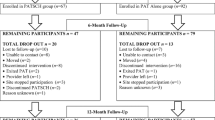Abstract
This study was conducted to evaluate parental satisfaction and acceptability of Project SafeCare, an intensive parent training program to prevent and treat child abuse and neglect with a focus on three areas of intervention: (1) home safety, (2) infant and child health care, and (3) bonding and stimulation. Social validation questionnaires were employed to evaluate the acceptability, the effectiveness, and the outcome of treatments based on parents' perspectives. The questionnaires were divided into four categories: outcome measures, process and procedures, staff performance, and training modes. Overall, Project SafeCare was reported to be very successful and parents reported high satisfaction with all three training programs. Parents rated the procedures, staff, and outcomes very positively. Although parents liked the videos and rated them positively, they seemed to prefer training by counselors to training by video. Data were collected on 45 families and the training was conducted over 15 weeks.
Similar content being viewed by others
REFERENCES
Bigelow, K. M., and Lutzker, J. R. (1998). Using video to teach planned activities to parents reported for child abuse. Child Fam. Behav. Ther. 20(4): 1–14.
Cordon, I. M., Lutzker, J. R., Bigelow, K. M., and Doctor, R. M. (1998). Evaluating Spanish protocols for teaching bonding, home safety, and health care skills to a mother reported for child abuse. J. Behav. Ther. Exp. Psychiatry 29: 41–54.
Lutzker, J. R., Bigelow, K. M., Doctor, R. M., Gershater, R. M., and Greene, B. F. (1998). An ecobehavioral model for the prevention and treatment of child abuse and neglect. In Lutzker, J. R. (ed.), Handbook of Child Abuse Research and Treatment, Plenum Press, New York, pp. 239–266.
Lutzker, J. R., Bigelow, K. M., Doctor, R. M., and Kessler, M. L. (1998). Safety, health care, and bonding within an ecobehavioral approach to treating and preventing child abuse and neglect. J. Fam. Viol. 13(2): 163–185.
Lutzker, J. R., Frame, R. E., and Rice, J. M. (1982). Project 12–Ways:Anecobehavioral approach to the treatment and prevention of child abuse and neglect. Educ. Treat. Child. 5: 141–155.
Mandel, U., Bigelow, K. M., and Lutzker, J. R. (1998). Using video to reduce home safety hazards with parents reported for child abuse and neglect. J. Fam. Viol. 13(2): 147–162.
O'Brien, M. P., Lutzker, J. R., and Campbell, R. V. (1993). Consumer evaluation of an ecobehavioral program for families with children with developmental disability. J. Ment. Health Adm. 20(3): 278–284.
Scriven, M. (1991). Evaluation Thesaurus, 4th edn., Sage, Newbury Park, CA.
U.S. Department of Health and Human Services, National Center on Child Abuse and Neglect (1993). Child Maltreatment 1997: Reports from the States to the National Center on Child Abuse and Neglect, U.S. Government Printing Office, Washington, DC.
Wolf, M. M. (1978). Social validity: The case for subjective measurement or how applied behavior analysis is finding its heart. J. Appl. Behav. Anal. 11(2): 203–214.
Author information
Authors and Affiliations
Rights and permissions
About this article
Cite this article
Taban, N., Lutzker, J.R. Consumer Evaluation of an Ecobehavioral Program for Prevention and Intervention of Child Maltreatment. Journal of Family Violence 16, 323–330 (2001). https://doi.org/10.1023/A:1011194417691
Issue Date:
DOI: https://doi.org/10.1023/A:1011194417691




